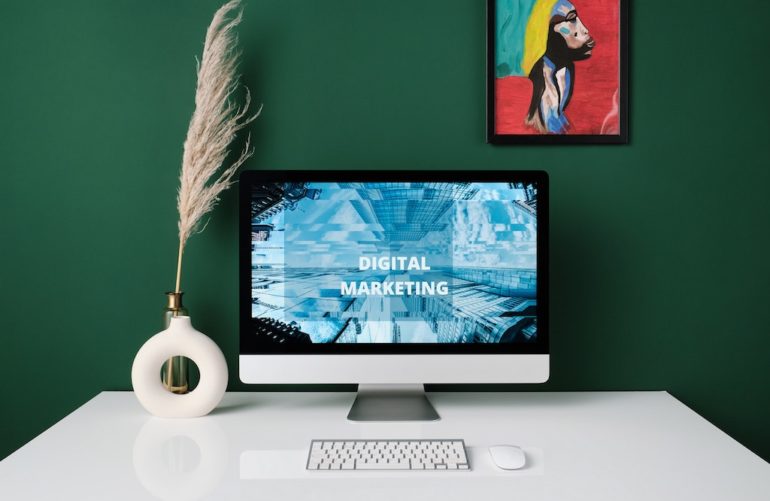Wherever you use it, marketing collateral needs to further the aims of your organization, get the word out about your brand and bring more customers and clients on board to increase sales of your products and services.
In the digital realm, there are more examples of marketing collateral than ever before, so understanding what they are and why they are worth creating and deploying is useful.
Here are some common examples so you can shape your own promotional strategies.
Video content
Many businesses leverage video content to connect with audiences in different contexts, whether on their own website or social media.
To create true marketing collateral in this medium, you must generate informative, educational, and professionally put-together clips. So we’re not just talking about trying to jump on the latest content bandwagon being bandied about on Instagram or TikTok.
Instead, videos that explain a concept and paint your company as an authority on a particular subject are the most impactful.
This could outline what one of your key products does or how it functions. It could be on a topic that’s related to your industry and relevant to your target audience.
You can produce professional-looking video content in-house, or outsource this if you don’t have the time, the gear, or the skills. Regardless, this example of marketing collateral is both eminently engaging and incredibly sharable, giving you the best of both worlds.
Infographics
Another example of how content with a visual element is one of many ways to increase engagement and traffic, the humble infographic is a piece of marketing collateral that doesn’t require too much work to put together but has the potential to pay off in a big way.
Whether you commission your own study to populate the infographic with statistics or pull the data from different established sources, which are also thoroughly cited and referenced, it’s an efficient way to establish your authority on a subject and impress prospects with your knowledge.
Once again, the shareability of infographics is part of the appeal. They work well, whether distributed via social media or hosted on third-party sites.
Of course, this means that they need to be built with brand recognition in mind, including your company name and logo and using your corporate colors. An experienced graphic designer can tackle this type of project with aplomb.
Blog posts
Blog posts are a tried and tested example of digital marketing collateral that remains potent despite competition from more cutting-edge alternatives.
They add value to your website for visitors looking for particular pieces of information aligned with your market niche and assist from an SEO perspective. Adding new content to your site to keep the search algorithms on-side is simpler if you’ve got a blog section.
Having a marketing collateral management system in place to oversee the different types of content is sensible. It makes publishing blog posts, videos, and more much less challenging since all the materials you need to conjure them up efficiently are kept in one place.
Also, remember that you don’t just have to publish content created in-house to your blog but can also use it as an opportunity for third-party authors to get their voices heard, further boosting your website’s authority.
White papers
So long as the industry you occupy and the audience you want to engage with is at the more technical end of the spectrum, then writing white papers will work well in a marketing context.
Here you’ll delve into more detail on a particular subject than you’d use for a blog post. However, again, your priority is providing useful information in an unbiased and interesting way.
There’s more work to do in terms of research and formatting, and white papers are closer to academic publications than conversational, casual content in tone.
A website
More broadly speaking, you can see your website as one of the most important instances of digital marketing collateral in your toolkit.
It’s the holistic storefront, and calling card of your business and brand all rolled into one, and it will be the place where plenty of the other examples of content covered so far will crop up as well.
There are a number of must-have features for a modern website, especially one which is explicitly sales-focused. Most importantly, it needs to be easy to use, appealing to look at, and capable of funneling visitors towards a sale, or at least bringing prospects on board and getting them to leave contact information for follow-up interactions.
This will, in turn, be tied into your digital ads because you want to ensure that the site is set up to match visitor expectations. Bounce rates will rocket if there isn’t cohesion in how you handle digital marketing collateral.
Customer testimonials
If you’ve ever been on a business website, then you’ve probably encountered customer testimonials in some shape or form.
They can be as simple as a featured logo from a third-party brand which is evidence of a product or service being used by a well-known company. But the most influential are those that include a snippet of positive feedback from a real person that speaks to the quality of their experience with the business in question.
Coupled with an image of the individual who’s provided the testimonial, along with their role, a testimonial can be the hook that nets you new customers and builds brand trust.
Final thoughts
Now you understand what types of digital marketing collateral are worth creating, it’s time to get out there and start the ball rolling on a few new promotional projects of your own.
Of course, there are many more options to consider, but start with these and then expand your reach once you’ve got into the swing of things.







